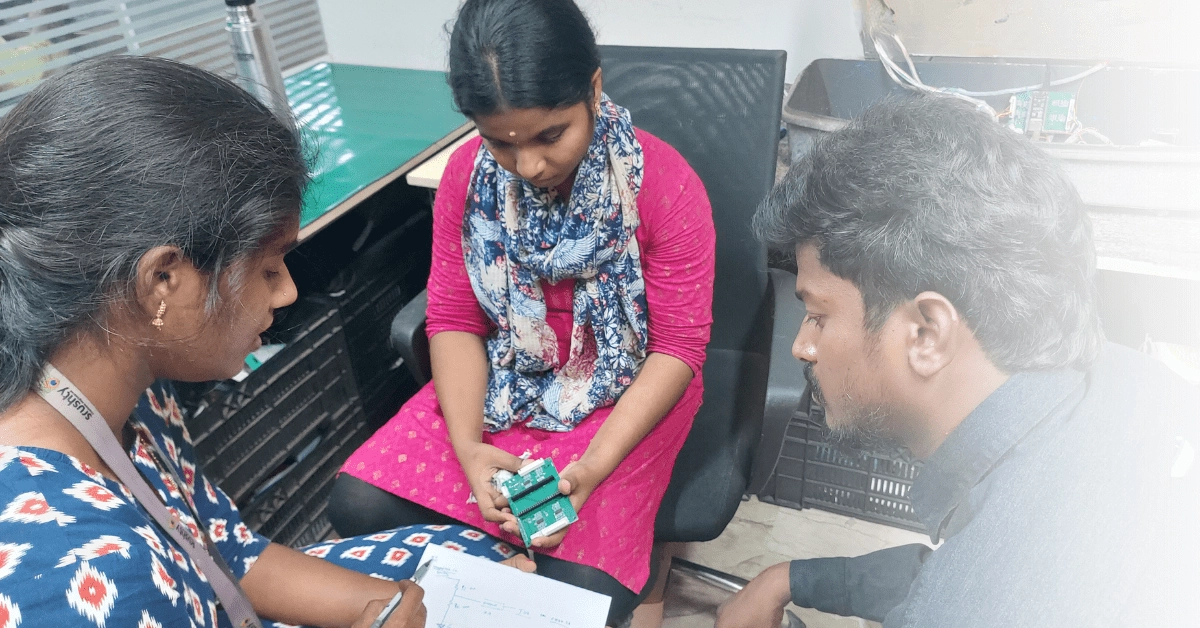Picture a world where connectivity knows no limits, where data flows effortlessly across vast distances, free from the constraints of traditional wireless technologies. That’s the promise of LoRa – a game-changing innovation in wireless communication that’s reshaping the landscape of IoT solutions.
Practical challenges with LoRa:
We wanted to build an effective device that taps LoRa’s data-transferring ability, and with this ambitious goal we started the project. Inspired by its potential to enable seamless data transfer across distances of up to 5 kilometres without relying on traditional Wi-Fi infrastructure, we set out to turn theory into reality.
However, as with any pioneering venture, we encountered challenges. Initial tests didn’t quite meet our expectations, revealing that achieving optimal performance required more than simply plugging in sensors and hoping for the best. It demanded thorough analysis, hardware adjustments, and countless iterations to fine-tune our setup.
We cracked the LoRa connectivity:
One crucial insight emerged from our efforts – the importance of antenna height. Just like traditional network infrastructure relies on towering structures to transmit signals effectively, LoRa’s performance hinges on the elevation of signal stations. Armed with this knowledge, we optimized our setups by raising antennas to new heights, significantly improving performance.
What we are building with LoRa :
We’re in the process of developing a water monitoring system using LoRa technology. Ten LoRa-connected devices will transmit data to a central device linked to the network, providing real-time data updates. Small data from these devices can be integrated to get maximum impact cost-effectively.
Use cases of LoRa in IoT:
We see LoRa as more than just a wireless connection – it represents an opportunity to develop cost-effective, scalable solutions with wide-ranging impacts. For example, in some government organisations across countries, LoRa is used for monitoring dustbins across different locations in a 5km range. It is also used for tracking water levels. LoRa’s versatility opened doors to innovative solutions that were once thought impractical.
Breaking the Challenges in Implementing Seamless Data Transfer with LoRa:
Urban environments presented new obstacles, with mobile towers and competing frequencies posing threats to data integrity. We tested it in multiple locations in urban areas but we couldn’t achieve even half a kilometre. When we tested it in an open space, it worked! We realised the impact of these competing frequencies. Antenna placement also plays a crucial role. We devised strategies to overcome these hurdles, leveraging strategic antenna placement to ensure seamless data transmission even in urban interference.
Advantages of LoRa:
LoRa, unlocks a world of possibilities –
- It is affordable, we can create ridiculously cheap monitoring systems with Lora
- You do not need a LAN or mobile network. LoRA is a free band.
- It is a resilient communication network, capable of withstanding natural disasters and network outages.
In a world increasingly reliant on connectivity, LoRa is reshaping the future of wireless communication. With its long-range capabilities and cost-effective solutions, it’s not just a technology – it’s a game-changer.
AUTHOR
Abinaya Selvam
Firmware Design Engineer, Srushty Global Solutions
Aspiring firmware engineer with thrust deep knowledge in field of electric design development oriented towards research, i emcompass on using advanced and reliable tech for meeting client demands. Always supportive and encouraging lightning performance in all the actions performed.







